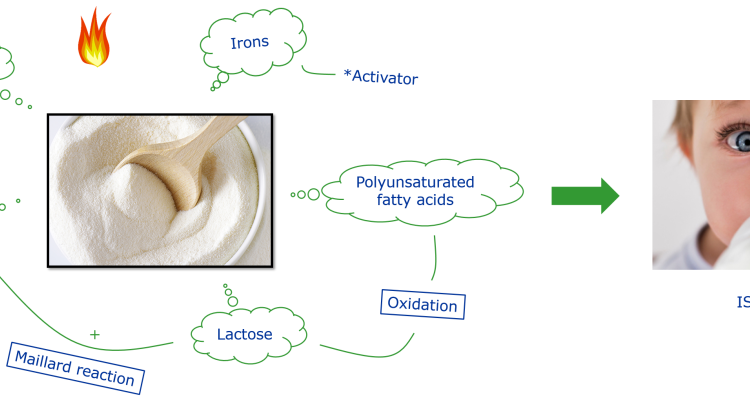
Project
Thermal processing contaminants in infant formulas
Infant formula undergoes a series of thermal processing steps to achieve an aseptic environment. However, the thermal processing will also lead to the formation of chemical contaminants such as Maillard reaction products. The formation of the Maillard reaction products decreases the quality and the digestibility of the infant formulas and might be relevant to the safety of infant formulas. Therefore, it is important to investigate their occurrence and the possible mitigation strategies to improve milk quality.
Aim
The aim of this topic is to obtain more insights into the formation of Maillard reaction products (particularly the glycation products, called AGEs) in different types of infant formulas. It will cover investigating their occurrence and finding possible mitigation strategies.
Approach
Doing a market survey on different types of cow-, goat-, and soy-based infant formulas that are available on the Dutch market. Get insights into how the different recipes contribute to the formation of AGEs. The data will be collected by HPLC-MS/MS method.
References
1. Birlouez-Aragon, I., Pischetsrieder, M., Leclere, J., Morales, F., Hasenkopf, K., Kientsch-Engel, R., Ducauze, C., & Rutledge, D. (2004). Assessment of protein glycation markers in infant formulas. Food chemistry, 87(2), 253-259.
2. Pischetsrieder, M., & Henle, T. (2012). Glycation products in infant formulas: chemical, analytical and physiological aspects. Amino Acids, 42(4), 1111-1118.
3. Troise, A. D., Fiore, A., Wiltafsky, M., & Fogliano, V. (2015). Quantification of Nε-(2-Furoylmethyl)-l-lysine (furosine), Nε-(Carboxymethyl)-l-lysine (CML), Nε-(Carboxyethyl)-l-lysine (CEL) and total lysine through stable isotope dilution assay and tandem mass spectrometry. Food Chemistry, 188, 357-364.
4. Van Boekel, M. (1998). Effect of heating on Maillard reactions in milk. Food Chemistry, 62(4), 403-414.
5. Troise, A. D., Fiore, A., Colantuono, A., Kokkinidou, S., Peterson, D. G., & Fogliano, V. (2014). Effect of olive mill wastewater phenol compounds on reactive carbonyl species and Maillard reaction end-products in ultrahigh-temperature-treated milk. Journal of Agricultural and Food Chemistry, 62(41), 10092-10100.